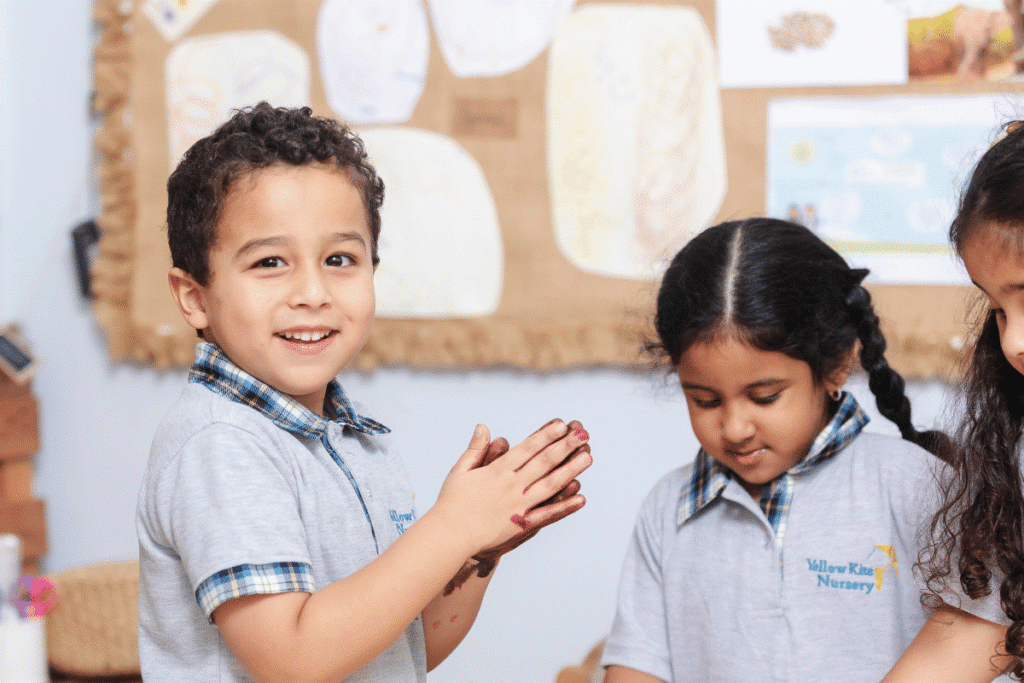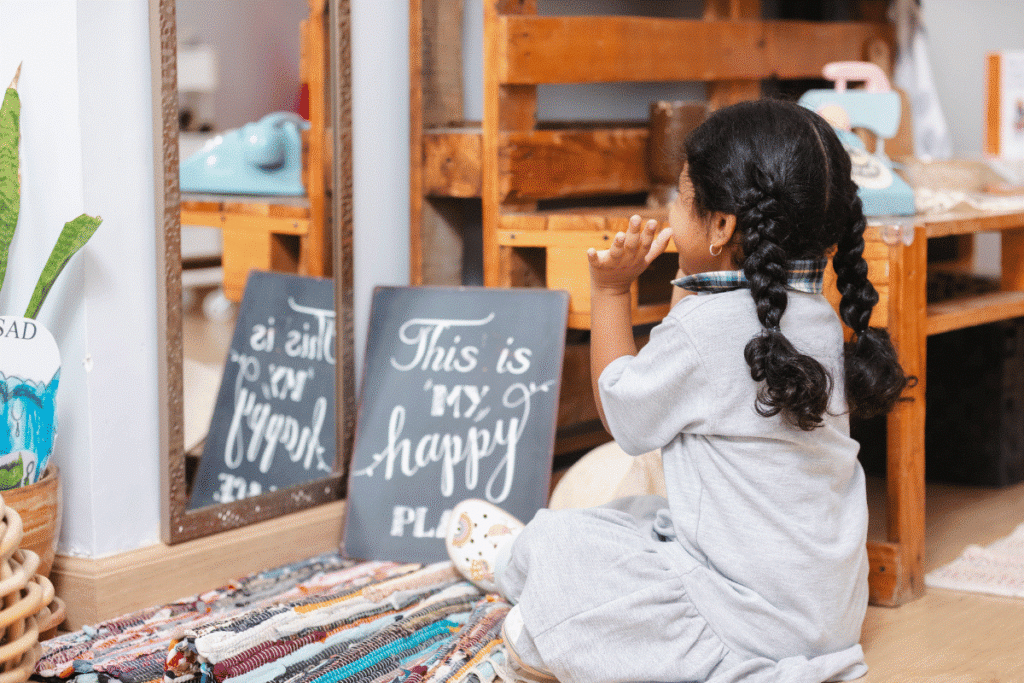If you step into one of our classrooms at Yellow Kite Nursery, you’ll notice something right away: our educators don’t hover, instruct, or direct every moment. Often, they stand back quietly, watching.
It may look simple, but that act of observation is one of the most powerful tools we have as teachers. It’s through watching carefully, with intention and curiosity, that we begin to truly understand children — their interests, their struggles, their strengths, and their needs.
Observation isn’t passive. It’s active, thoughtful, and absolutely central to the Curiosity Approach.

Why Observation Matters
When we observe, we do more than “keep an eye” on children. We are:
- Gathering insights into their learning journey.
- Spotting developmental milestones.
- Recognising their unique ways of thinking and problem-solving.
- Identifying areas where they may need more support or challenge.
Without observation, we risk making assumptions. With observation, we see the child for who they really are.
What Observation Looks Like in Practice
Observation doesn’t always mean clipboards and ticking boxes. At Yellow Kite, it can look like:
- Watching how a child approaches a tricky puzzle.
- Noticing the way they negotiate roles in pretend play.
- Listening to the questions they ask when exploring outdoors.
- Paying attention to body language, tone of voice, and energy levels.
These little moments give us big clues about how children learn and how we can support them. As a nursery in Meydan, we’ve created spaces specifically designed to allow educators the vantage points they need to observe meaningfully without disrupting play.
Observation as Respect
Standing back to observe sends a powerful message: I value you. I trust you. I want to see what you can do on your own.
Children deserve space to show us who they are without constant adult interference. By observing first, rather than jumping in with instructions, we show respect for their abilities.
The Balance Between Watching and Acting
Observation doesn’t mean doing nothing. It means pausing long enough to decide the best way to act. Sometimes that might mean stepping in with a gentle question, offering new vocabulary, or providing a challenge. Other times it means letting children persevere without interruption.
The real skill lies in knowing when to step back, when to step forward, and when to simply let the learning unfold.
Actionable Tips for Parents
You don’t need to be a teacher to use observation at home. Every parent can learn so much just by watching. Try:
- Step back: Before jumping in to help, give your child a moment. See what they try first.
- Watch body language: Are they frustrated, curious, or deeply focused? This helps you respond with empathy.
- Take notes: Jot down a funny phrase, a new skill, or a challenge they struggled with. Over time, you’ll see patterns emerge.
- Ask open-ended questions: Instead of “Do you need help?” try “What do you think you could try next?”
- Celebrate effort: Point out what you noticed. “I saw how you kept trying different pieces until it fit. That shows persistence.”
Actionable Tips for Teachers
For educators, observation should feel natural and embedded in practice. Some ways to make it meaningful:
- Be intentional: Focus on one child or small group at a time, rather than trying to see everything at once.
- Use the environment: Position yourself so you can watch without interrupting play.
- Record snippets: Photos, notes, or short quotes help capture the learning moment authentically.
- Look beyond the obvious: Notice not just what a child does, but how they do it — their strategies, emotions, and social interactions.
- Reflect and respond: Use your observations to adapt activities, set up new invitations to play, or scaffold learning in meaningful ways.
These practices form the foundation of quality early years education, and they’re principles we hold dear at our nursery in Meydan.
Why Rushing Gets in the Way
In busy classrooms or homes, it’s tempting to rush children through activities or jump in with solutions. But rushing blinds us to what’s really happening.
Observation forces us to slow down. It allows us to notice the details — the problem-solving strategies, the social negotiations, the spark of curiosity — that are easy to miss when we’re in a hurry.
Shifting Our Perspective
When we see observation as a tool, everything changes. Instead of thinking, “I need to teach this skill,” we begin asking, “What is this child showing me? What do they need right now?”
It’s a perspective shift: from telling children what to do, to learning from them first.

Final Thought
Observation might look like the simplest part of teaching, but it’s actually one of the most powerful. By watching closely and with intention, we learn who children really are and how best to support them.
At Yellow Kite Nursery, observation isn’t an afterthought — it’s at the heart of everything we do. Because when we truly see children, we can help them thrive. For families seeking a nursery in Meydan that prioritizes understanding each child as an individual, this observational approach makes all the difference in creating truly personalized learning experiences.
Next time your child is busy at play, resist the urge to step in straight away. Watch. What can you learn just by observing?
